Growing up I was always fascinated with TV shows and movies involving crime, violence and the likes. But it never occurred to me that television was not always this extreme. It led me to research just exactly how television as a media form has made the transition to being a medium filled with television series that not only focus on such mature topics but depicts them in mature graphic manners as well. A lot of leeway has been given to the present day context of television. But just how as a culture have we shifted to enjoying the violence on screen and has television gone too far? Starting off we must first delve into the broadcast era, a simpler time for television. Analyzing the roots will serve as a better understanding to how as a culture we currently live in a time of violence and gore.
Family Time!
Parental influence over television has been a long drawn out battle for years. When television entered the homes back in the late 50s, TV shows were geared towards family units. This is obviously a stark contrast from what we see today, but first let I shall lay out the foundation of “family friendly television. Family friendly television consisted of content dedicated to clean and wholesome imagery not used to offend. The early 50s and 60s consisted of content that provided shows with one-off episode plots. Majority of the shows were centered around comedy and provided an entertaining outlet for the whole family.
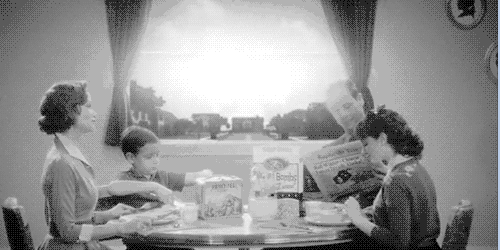
The 60s were a great time for the nuclear family. With classic shows such as Leave It to Beaver, Burns & Allen gracing the television airwaves, the 60s were an era of feel good thought provoking life lessons wrapped in a cheesy story line that still resonates with some viewers today.
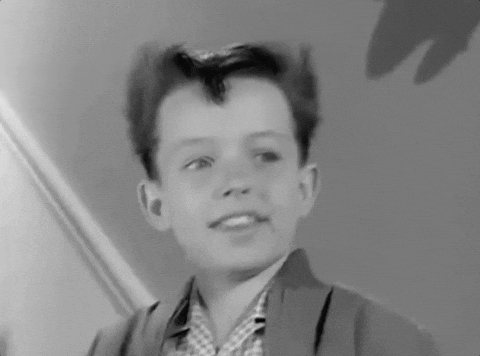
The Cowboys are coming?
While majority of televisions didn’t enter the home until the 1950s, there was already a lot of discourse around the popular series The Lone Ranger. The Lone Ranger was a western styled show filled with comedy, action, shooting, and mischief, the core of all formulaic Westerns that we see today. During its run it was labeled “violent” because of its depiction of guns and discreet showcases of blood.

Another less talked about Western included The Rifleman. Set in the 1880s and aired during the late 1950s to early 60s, was a show about a civil war veteran and a widower. It followed the same Western formula of getting into situations and creating action to entertain viewers. An actor from its show was quoted stating “There was a lot of violence on The Rifleman. We once figured out that I killed on the average of two and a half people per show. That’s a lot of violence,” their violence was tame and boy were they in for a surprise….

The Death of Television Code
From 1952 to 1983 there was a set of ethical standards in place on what could and could not be shown on television. The classic 60s sitcom was the standard and anything else was shunned by parents who had their worries about their children being exposed to sex and violence. Many shows were starting to become permissive during the 70s and when the code was finally murdered in 1983, this introduced a new wave and in that wave was also… crime.
Television code was like:

Crime
The 80s and 90s brought along a new wave of content… crime shows! Crime shows were a hot commodity, with shows such as Hill Street Blues leading the pact, they delved into topics that consisted of the every day lives of normal people. The shows creator was quoted saying back in the day “Violence is alive and well on television” and he sure was right. With a string of other hit shows such as Miami Vice and HSB pioneering action packed intensity, violence was essential part to stories as they created a sense of realism that shows from the 60s lacked.
But Wait! There’s War…on violence in T.V.?
Shows like Hill Street Blues didn’t just happen overnight, in fact there was a huge ordeal over what could and couldn’t be shown on television. Television networks constricted the freedom of show creators and writers like Bocho. Behind the scenes was a stalemate of sorts between producers and broadcast execs. Television networks feared that these realistic crime dramas would push the envelope too much and shows had to go through an approval process.
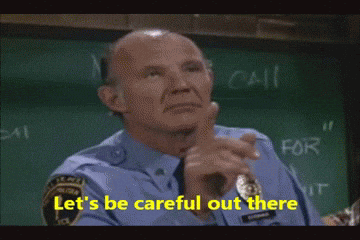
Television Code: The solution
In 1993 TV Parental guidelines were set in place that labeled shows based on their content. This was a fascinating solution to work around appeasing parents, but also directors and producers who did not want their content restricted.
Next Stop: The Convergence Era!
The convergence era is a peculiar yet exciting time, Violence is booming. We’ve reached the cultural peaks of the zombie era with shows like The Walking Dead, and Game of Thrones creating an atmosphere all of its own regarding war, death, and gore.
The Walking Dead premiered in 2010, and since airing it has amassed a strong fan base of zombie lovers. People from all ages tune in each Sunday night to watch the gore fest commence as the characters battle zombies and human enemies. But the key word in this is all ages. Since TWD has become quite the phenomena maybe we’ve entered a new era of “family TV.” AMC, not being one of the “big 3” could be at an advantage. Since AMC is a payed cable network the content viewers receive has more leeway.

Just an Eye-dea
But is there such thing as going too far? TWD has had many blood bath moments but a pivotal one in the series history was the death of a beloved character. Many fans and critics alike were taken aback by the gruesome death of a character and even an actor on the show was left stating “I regret the manner in which it happened. We’ve been able to terrify people in film for 100 years without having to show an eyeball.”

Then we have the infamous Game of Thrones! Think of Lord of the Rings but amplify its blood and gore times 10. It is a show not for the faint of heart. 9 times out of 10 there’s going to be some blood drawn in an episode. But violence is a necessary tool to the overall plot. Set in medieval times the things depicted are not unheard of and should not be watered down to appease audiences and critics alike.
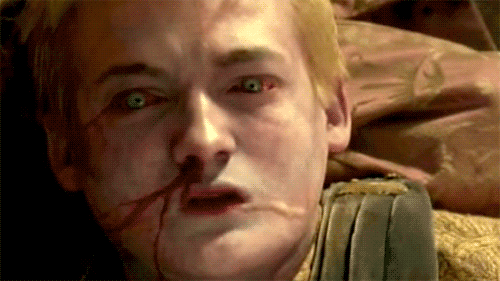
Crime is Sublime
We can’t rule out crime shows either, Hill Street Blues influenced an entire wave of crime shows. If it weren’t for HSB we may have never seen shows such as the CSI franchise, Law & Order, and Criminal Minds. Violence has become ingrained in TV culture and HSB helped to create that cultural foundation.
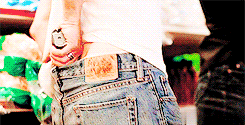

The Economics & Format:
This leaves me with the evolution of violence in T.V. When you have shows like The Walking Dead and Game of Thrones that are shown on AMC and HBO respectively, it gives way to artistic freedom. HBO is considered to be a premium cable channel.
What does the word premium entail?
The context of television has changed over the years. Networks were created that were not broadcast to the public like CBS, NBC, and ABC. Premium networks provide content outside of the public TV standards which is why shows such as Game of Thrones exist. The viewer has to pay a fee to subscribe to the content on their platform. This process does indeed work in theory, as time has progressed so has technology. A show like Game of Throne cost 10 million an episode to produce.

The excessive use of blood and gore cost a pretty penny and add that in with the advancement of special effects such as CGI dragons, elaborate costumes and set designs and a cast of main and recurring characters that culminates to a whopping 40+ TV shows such as GOT are an experience. An experience that TV execs believe you should be paying a little extra for.
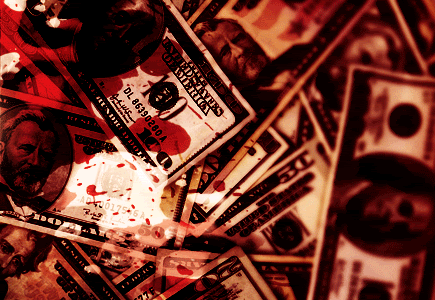
The Culture of the Audience:

I guess all of this research answers my question that I set out to try and comprehend. Has violence in television entered an era of obsessive use and why has the audience allowed it? Throughout my research I’ve come up with the answer that violence is the necessary component that makes up the shows we know and love. If one was to minimize the violence, story lines may fall flat. All of this can be viewed from a cultural perspective that Newcomb and Hirsch speak about. The executives today are cultural interpreters that understand the audience and its market. Violence has always been in television, just the level of violence was not as advanced and the audience has always enjoyed it for the most part, especially considering the multitude of movies like Night of the Living Dead that birthed TV shows such as TWD. TV is just a more expansive outlet providing a variety of different takes on violence. The audience wants violence, and that’s not necessarily a bad thing at all.
My mind =
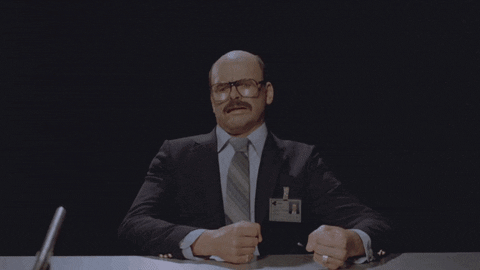
Sources:
NY Times: Why TV Won’t Let up on Violence
Television on Television Violence: Perspectives from the 70s and 90s
Newcomb and Hirsch – Television as a Cultural Forum